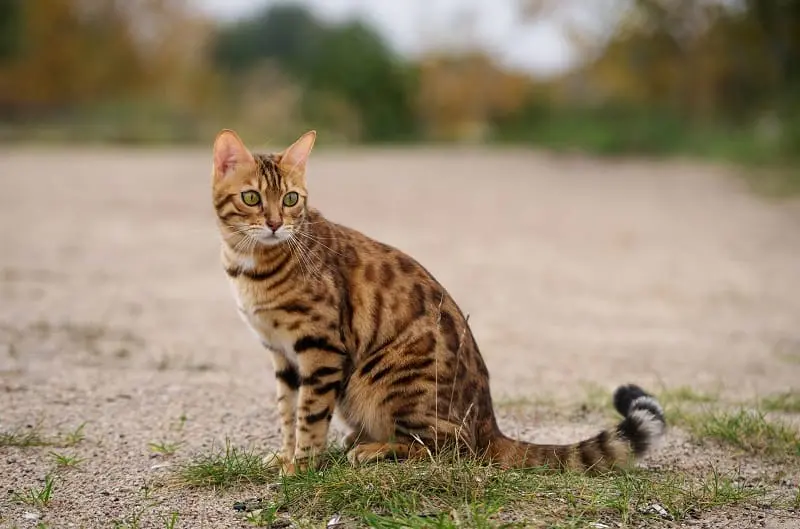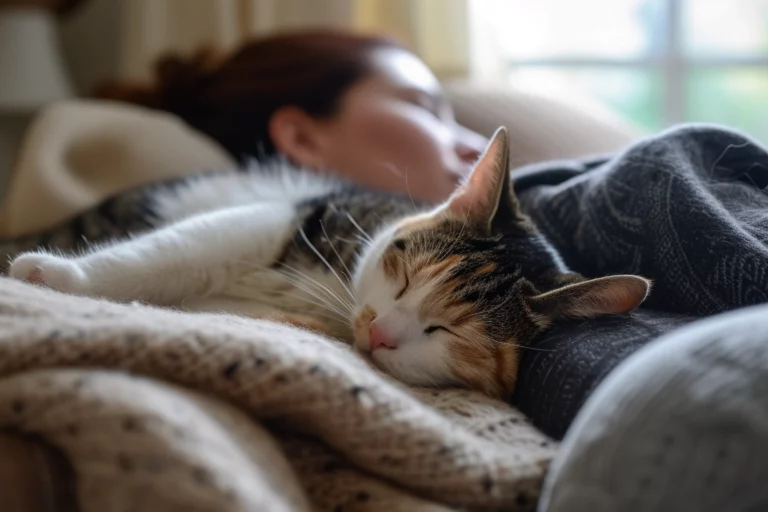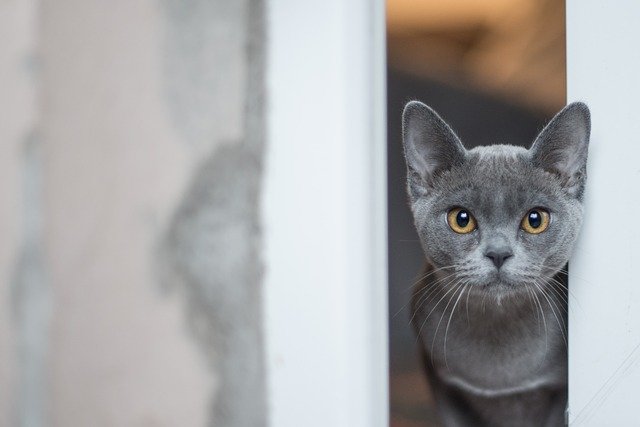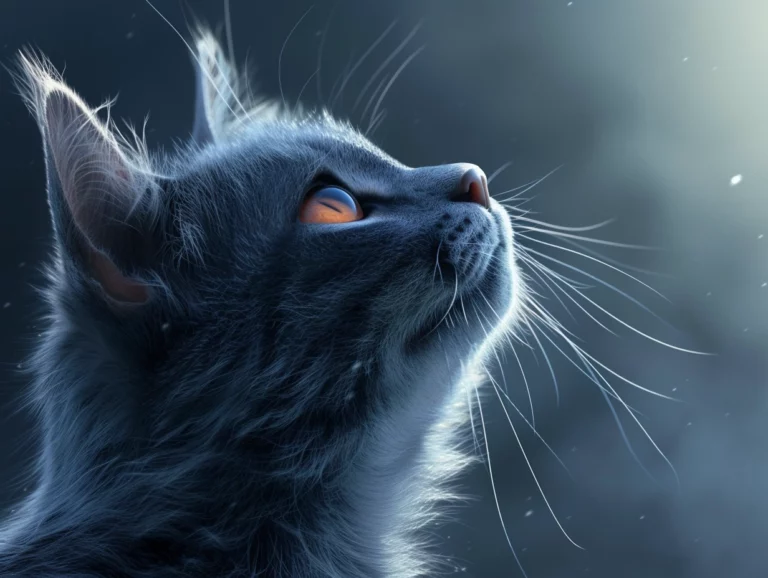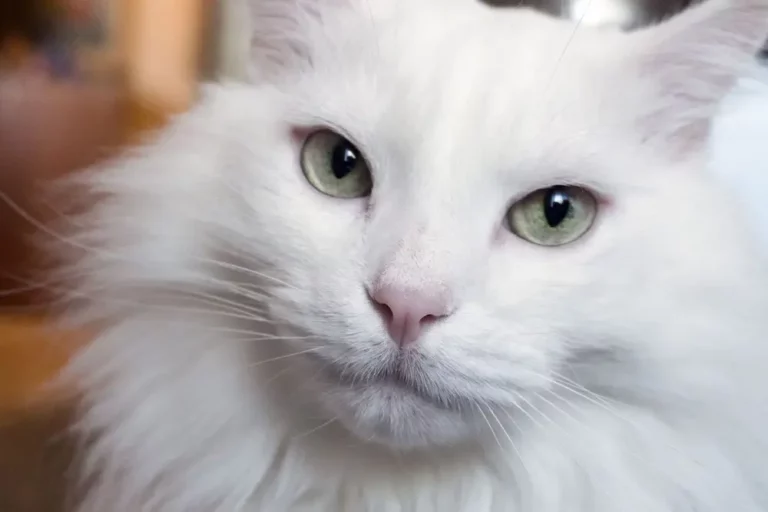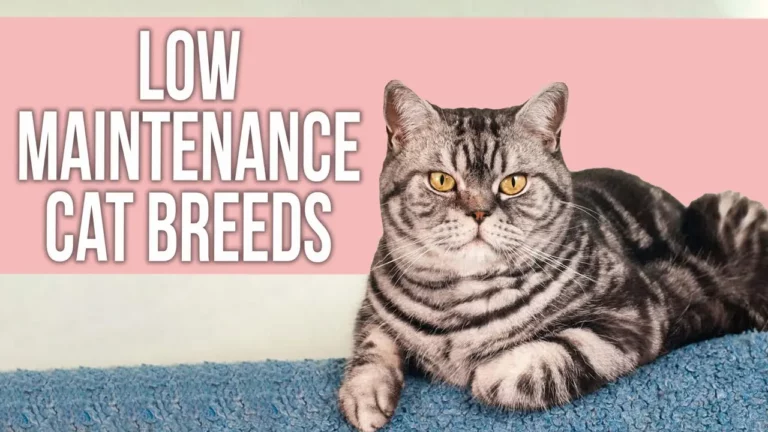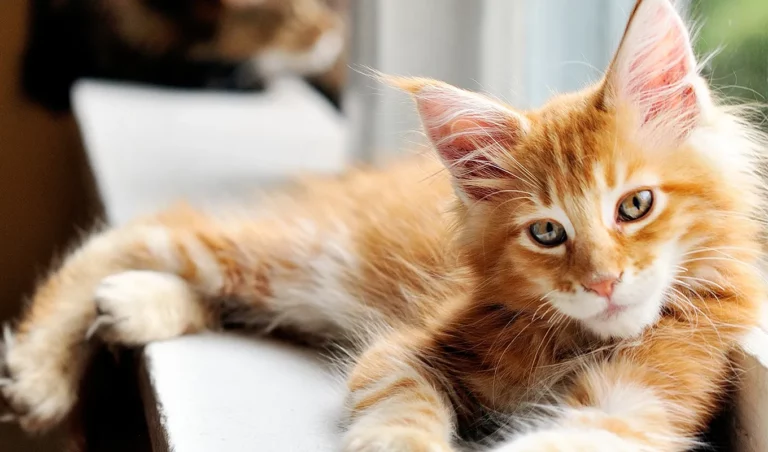Ultimate Bengal Cat Guide: Care, Traits & Fun Facts
Have you ever found yourself mesmerized by a
That’s the allure of Bengal cats, a breed that combines the exotic look of a jungle
What many don’t know is that these stunning creatures are the product of meticulous breeding, blending the wild Asian leopard
This has resulted in a breed with not just an extraordinary appearance but fascinating genetic traits, such as the iridescent sheen of their coats, known as the “glitter effect.”
In this text, I’ll take you through the essentials of what makes Bengal cats so unique—from their origins and genetic makeup to their playful personalities and care needs.
Whether you’re a seasoned Bengal owner or simply a
Let’s jump into the captivating world of Bengal cats and explore what sets them apart.
Overview of the Bengal Cat Breed
Delving deeper into the world of Bengal cats has always been a fascinating journey for me.
As someone deeply passionate about
Let’s explore the history and origins of this breed, as well as their physical and personality traits, to give you a comprehensive understanding of what makes Bengal cats so unique.
History and Origins
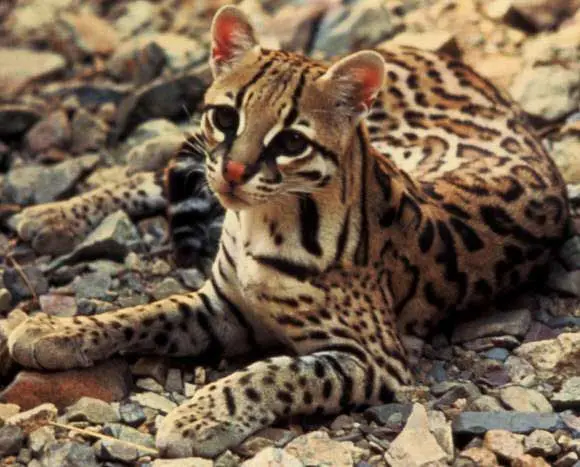
The story of the Bengal
Originating from the crossbreeding between domestic cats and the wild Asian leopard
This ambitious project began in the 1960s, but it wasn’t until biologist Jean Mills took it upon herself in the 1970s to intensify the efforts that the breed as we know it began to take shape.
The name “Bengal,” derived either from the wild ancestors’ Latin name or as a tribute by Bill Engler, underscores their exotic lineage.
It’s important to note that the Bengal breed has since evolved significantly.
While early generations of Bengals (known as F1 and F2 generations) were closely linked to their wild counterparts, today’s Bengals (F4 and beyond) are bred to maintain their unique appearance while embodying the temperament of a loving, domesticated
This transformation wasn’t easy; it took years of careful breeding and a deep understanding of genetics to achieve the perfect balance.
Physical and Personality Traits
Physically, Bengals are a marvel.
They boast a muscular build, large size (often weighing over 12 lbs), and a short coat that’s not only soft but also requires moderate grooming.
Their coats come in a variety of colors – from rich browns to cool silvers – and patterns like marbling and large spots that mirror their wild ancestors.
But, it’s the unique “glitter effect” on their fur, a genetic trait passed down from domestic cats, that often leaves people in awe.
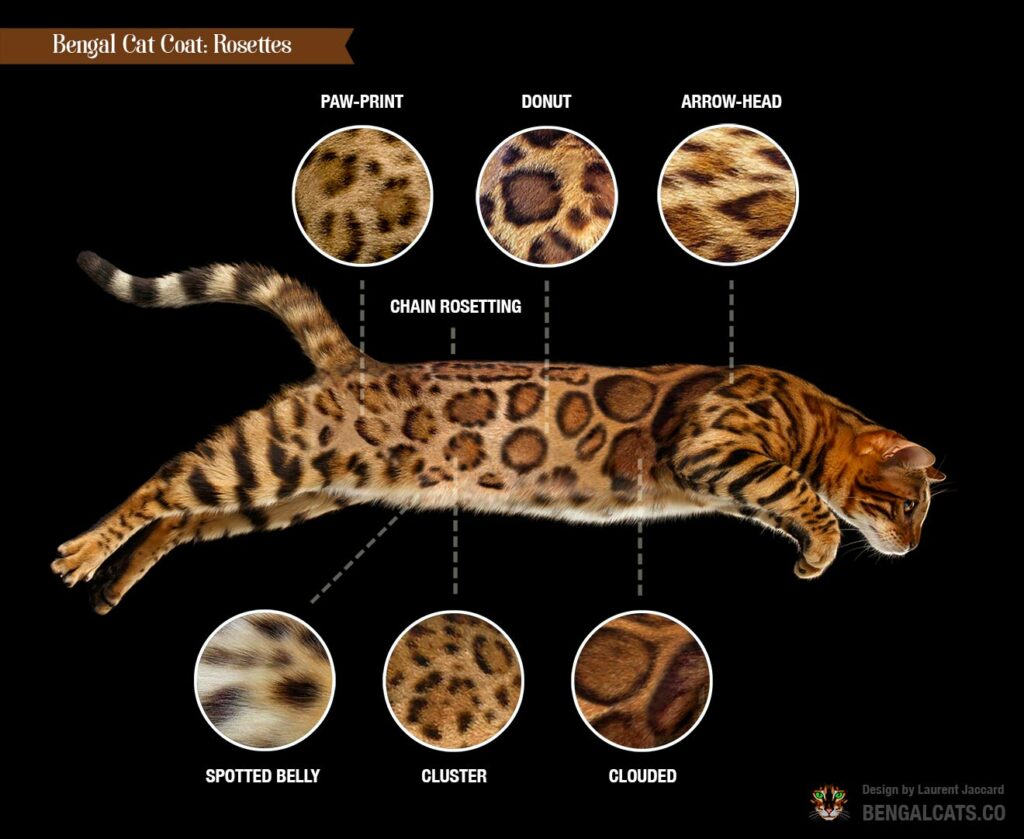
But, Bengals are more than just their looks.
They are highly social creatures with a penchant for play.
From my experience, Bengals thrive in environments where they can explore, climb, and interact with their human companions.
They’re not the type to shy away from a good challenge, be it mastering a new trick or figuring out a puzzle toy.
Also, unlike many felines, Bengals have a curious affinity for water, often happily joining their owners for a splash in the tub or pawing at running taps.
Key Characteristics of Bengal Cats
As I investigate deeper into the characteristics of Bengal cats, you’ll quickly realize how unique and remarkable this breed truly is.
From their distinctive appearance to their undeniably vibrant personality, Bengals stand out in the feline world.
Let’s explore what makes them so special.
Appearance and Size
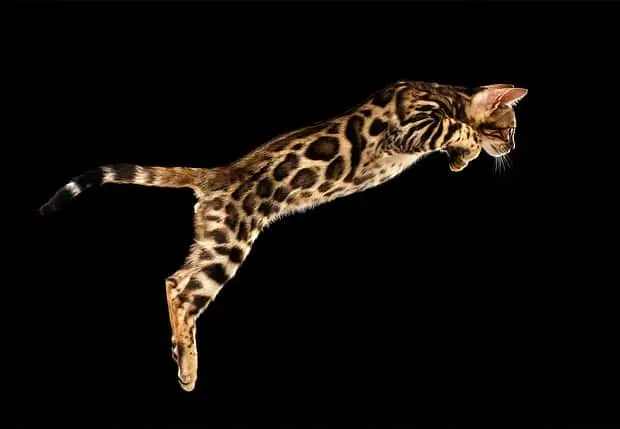
Picture this: A
That’s your Bengal
They boast a striking coat, patterned with spots or marbles, that glimmers as if sprinkled with fairy dust.
This “glitter effect” is not just a fancy term; it refers to a specific genetic trait resulting in a coat that truly sparkles in the sunlight.
It’s quite mesmerizing, actually.
Size-wise, Bengals are relatively larger than your average house
Adults can weigh over 10 pounds, with males often being larger than females.
Their muscular build is not just for show; it grants them an extraordinary athleticism that is as beautiful as it is powerful.
A Unique Personality: Playful and Energetic

If you’re picturing a laid-back lap
Bengals are the definition of high-spirited.
Their energy levels are through the roof, and they possess a playful nature that can entertain (or, perhaps, exhaust) for hours.
It’s not uncommon to find a Bengal
My advice?
Invest in a variety of toys that stimulate their hunting instincts—think feather wands, laser pointers, and puzzle feeders.
Bengals need mental stimulation as much as physical activity, so interactive play is key.
This not only keeps them entertained but also helps strengthen the bond between you and your feline friend.
A Bengal’s playful demeanor is matched by an intense curiosity.
They’re the type to figure out how to open cabinets or retrieve hidden toys from seemingly impossible places.
Hence, Bengal-proofing your home becomes a rather peculiar task, filled with securing cabinets and providing plenty of permissible exploration spaces.
But, don’t let their spirited nature fool you.
Bengals are also incredibly affectionate and will seek out your attention and companionship eagerly.
They’re not the type to shy away from guests either, often greeting them with the same curiosity and enthusiasm they show towards everything else.
While they may not be the perfect fit for someone seeking a calm, sedentary pet, for those able to match their energy and zest for life, Bengals make truly extraordinary companions.
Remember, understanding and catering to their unique needs is the key to a happy coexistence.
Health and Care
Diving into the health and care of Bengal cats, I’ve gathered essential insights to ensure your furry friend remains in tip-top shape.
Being well-informed can make a world of difference in your Bengal’s life, so let’s break it down into digestible, actionable pieces.
Common Health Issues
Firstly, understanding the health world of Bengal cats is critical.
One common issue is Hypertrophic Cardiomyopathy (HCM), a heart condition causing the muscle to thicken.
Imagine your heart working overtime, every day; that’s what HCM feels like for a Bengal.
Regular screenings are vital to catch this early.
Then, there’s Progressive Retinal Atrophy (PRA), leading to loss of sight.
It’s akin to the lights dimming slowly, affecting their night-time prowls.
Equally important to watch for is their sensitivity to anesthetics, implicating extra caution during surgeries.
Hence, establishing a relationship with a vet experienced in Bengals is my top advice. They’re your ally, ready to tackle these issues head-on with you.
Diet and Nutrition
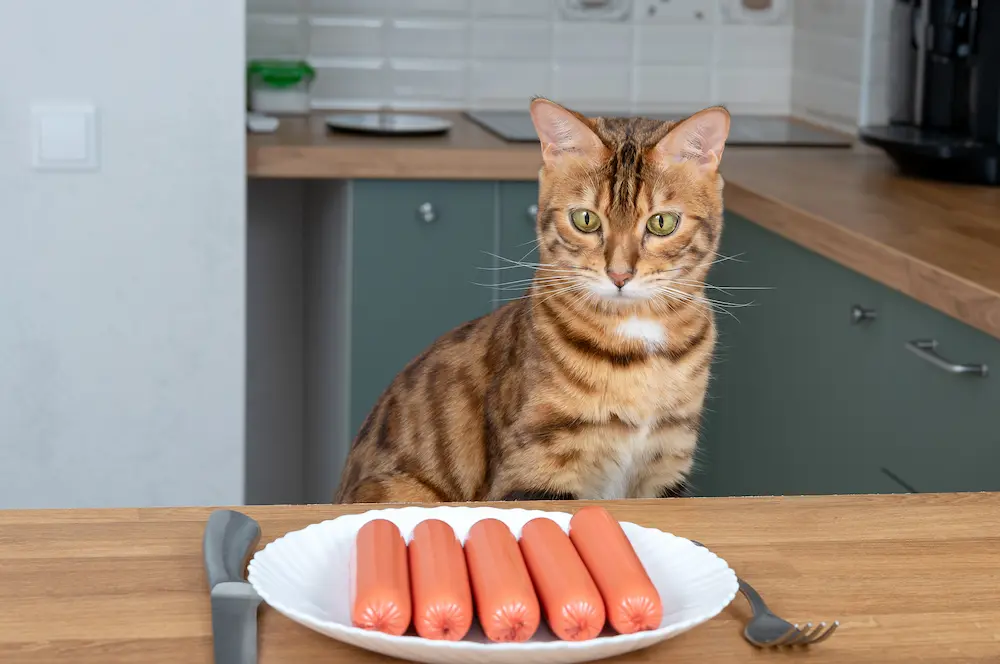
Onto diet and nutrition, the foundation of good health.
Bengals aren’t finicky eaters, but they thrive on balanced nutrition.
Think of it like fueling a high-performance engine; premium fuel equals peak performance.
High-quality, age-appropriate food is non-negotiable.
Given Bengal cats’ activity levels, they burn through calories.
I recommend a mixture of wet and dry food to keep them hydrated and energized.
If your Bengal is diagnosed with an intestinal disorder, a prescription diet may be necessary. Always consult your vet before making dietary changes.
Exercise and Activity Needs
Let’s talk about their need for exercise and activity.
Bengals are like little athletes – agile, fast, and full of energy.
Without adequate physical and mental stimulation, they can become bored, leading to destructive behaviors.
Interactive play sessions are your best friend here. Wand toys, puzzle feeders, and even a
Remember, a tired Bengal is a happy Bengal.
Besides, consider enriching their environment.
To conclude, caring for a Bengal
It’s about understanding their unique health challenges, nutritional requirements, and boundless energy.
By staying informed and proactive, you’re setting the stage for a long, happy life together.
And believe me, the joy and companionship Bengal cats offer in return are well worth the effort.
Grooming and Maintenance
Let’s shift our focus toward ensuring these vibrant creatures are well cared for and maintain their majestic appearance.
Grooming and maintenance are integral parts of Bengal
I’ll walk you through the essentials of coat care and share behavioral tips that contribute to a happy, thriving Bengal.
Coat Care
Bengals are renowned for their stunning coats, reminiscent of their wild ancestors.
Their grooming needs, while not extensive, do require attention to keep their coat shiny and healthy.
Weekly brushing does wonders, removing loose fur and distributing natural oils evenly across their coat.
I’ve found a soft-bristle brush works best for my Bengal’s short hair, turning grooming into a bonding session rather than a chore.
For long-haired Bengals, daily combing might be necessary to prevent matting and tangles.
Investing in a quality comb and being gentle during grooming sessions will ensure your Bengal not only looks their best but feels great too.
Nail care is another aspect not to be overlooked.
Clipping their nails once a month, or as needed, prevents overgrowth and scratching issues.
Similarly, oral health is paramount.
Daily teeth brushing might sound daunting, but with the right approach and patience, it can become a routine part of your Bengal’s care.
Special feline toothbrushes and toothpaste can make this task easier.
Behavioral Tips for a Happy Bengal
Bengals, with their energetic and playful nature, require more than just physical care; their mental well-being is equally important.
Here are a few tips I’ve employed to keep my Bengal
- Enrichment Toys: Puzzle feeders and interactive toys stimulate their mind and satisfy their natural hunting instincts. Watching my Bengal solve puzzles just to get a treat is both entertaining and rewarding.
- Climbing Spaces: Bengals love to climb. I’ve found that
cat trees, shelves, and even window perches encourage this behavior in a safe and controlled environment. - Playtime is Crucial: Dedicate time each day for play. Interactive toys like laser pointers or feather wands engage their predatory instincts. Remember, play sessions are excellent for bonding and ensure your Bengal uses up their abundant energy constructively.
- Socialization: Bengals are sociable animals that thrive on interaction. Introduce new people, pets, and environments gradually and positively to keep them well-adjusted and confident.
- Training: Surprisingly, Bengals are trainable. Positive reinforcement and clicker training work wonders for teaching tricks and promoting good behavior. It’s a fun way to engage their intelligence and deepen your connection.
Summarizing, grooming and maintenance of Bengal cats go beyond their physical care, encompassing their emotional and mental well-being.
A combination of regular grooming, enrichment activities, and positive social interactions ensures your Bengal not only looks good but feels good too.
Living With Bengal Cats
Bengal Cats and Water: A Surprising Love
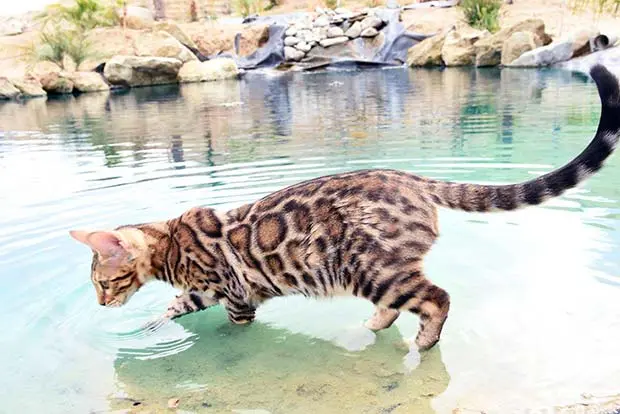
One of the most delightful surprises about living with a Bengal
Unlike most feline breeds that shy away from the wet stuff, Bengals are drawn to it.
They’re not just about dipping a paw in—some actually enjoy a good swim!
This unusual trait makes for some unique interactive playtime opportunities that both you and your Bengal will love.
For instance, incorporating water games into your Bengal’s routine can be a fantastic way to engage their playful nature.
A dripping faucet or a shallow dish of water can provide endless entertainment.
But, always supervise your Bengal during water play to ensure their safety, especially if you have a deeper water source like a bathtub or a small pool.
Compatibility with Children and Other Pets
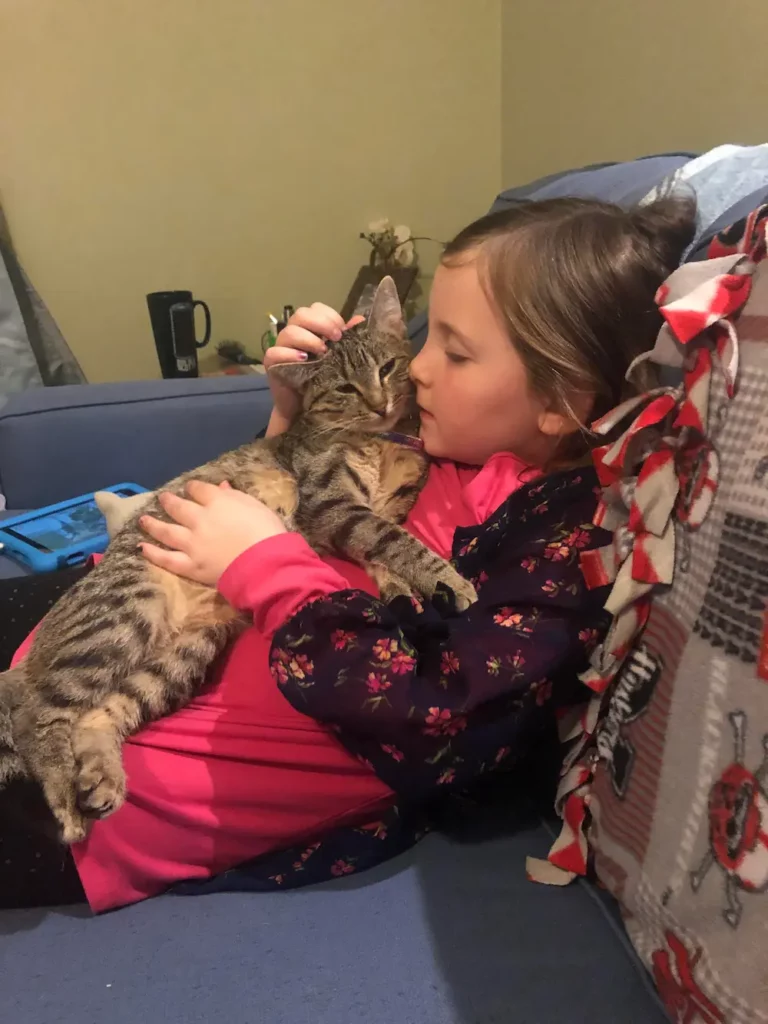
Living harmoniously with a Bengal
They’re a breed that thrives on interaction and companionship, making them excellent family pets.
If you have children, Bengal cats can be a wonderful addition to your household.
Their energetic and playful nature means they often bond well with kids who respect their space and learn to engage with them properly.
Teaching your children how to interact with your Bengal, including when to give them space, can help foster a strong, loving relationship between them.
Bengals are also known for their compatibility with other pets, including dogs.
Their confident, outgoing personalities make them well-suited to homes with multiple pets.
But, introductions should be slow and supervised to ensure all animals are comfortable with each other.
Some Bengals might prefer being the only pet, requiring your attention and love exclusively.
It’s essential to assess your Bengal’s personality and compatibility with existing pets before bringing them into a multi-pet household.
My advice?
Always create a safe space for your Bengal
This gives them a sense of security and control over their environment, ensuring they can always escape to a quiet spot when needed.
Living with Bengal cats is an adventure filled with affection, play, and a bit of water-induced fun!
Embrace their unique characteristics and needs, and you’ll enjoy a deeply rewarding relationship with your exotic companion.
Adoption and Responsible Breeding
Becoming a Bengal
Whether you’re considering adoption or purchasing from a breeder, it’s crucial to make informed choices. Let me guide you through this important process.
Choosing a Breeder or Adoption Option
When it comes to bringing a Bengal
Both options can lead you to a furry companion, but they come with different considerations.
Adopting a Bengal
Shelters sometimes have Bengals or Bengal mixes that need loving homes.
Adoption not only gives you the chance to offer a forever home to a
But, it might be harder to find a purebred Bengal through adoption and getting detailed information about the
If you’re set on a pedigreed Bengal to perhaps, jump into the world of
A good breeder invests in the health and well-being of their cats, ensuring they’re both genetically tested for common health issues like HCM and PRA, which I discussed earlier.
Here’s how to find one:
- Look for Certifications: Breeders recognized by
cat registries such as TICA or FIFe adhere to high breeding standards. - Visit in Person: Seeing a breeder’s facility firsthand lets you inspect the living conditions of the cats and kittens.
- Ask for Health Guarantees: A trustworthy breeder offers health guarantees and is transparent about any genetic conditions in their lines.
- Request References: Speaking to others who have adopted from the breeder can provide insights into their practices and the health and temperament of their cats.
Remember, responsible breeding practices are crucial for the health and future of the breed.
Reputable breeders not only contribute to the
Fun Facts and Misconceptions
Diving deeper into the intriguing area of Bengal cats, I’ve stumbled upon some intriguing aspects and common misconceptions that I’m eager to share with you.
Bengals are more than just pets; they’re a marvel of genetics with a wild appearance that captivates.
But, there’s more to them than meets the eye.
The Leopard-Like Look
Bengal cats indeed have a stunning, leopard-like look that turns heads and draws attention.
This wild appearance isn’t just skin deep; it’s a result of meticulous breeding and genetics.
Initially, Bengals were bred by crossing domestic cats with the Asian leopard
This unique blend is what gives Bengals their exotic coat patterns and shades ranging from golden to ruddy browns, sometimes even with a captivating silver or charcoal base.
Their coats feature spots, rosettes, or marbling, making each Bengal distinct.
The iridescent sheen on their fur, often referred to as “glitter,” catches the light beautifully, making their coat seem to sparkle in the sunlight.
This glitter effect is a fascinating trait that comes from a mutation in a domestic
It’s aspects like these that truly set Bengals apart in the feline world.
But, a common misconception is that because of their wild genetics, Bengals are not suitable as family pets.
This couldn’t be further from the truth.
Bengals are affectionate, engaging, and deeply bond with their families.
They possess a high energy level and a playful nature, making them perfect companions for active households.
They thrive on interaction and mental stimulation, so engaging toys and activities, like puzzle feeders and agility training, go a long way in keeping them content.
Bengal Cats’ Names and Their Meanings
Ever wonder how Bengal cats got their name?
It’s a nod to their wild ancestry, the Bengal leopard
The term “Bengal” embodies their exotic lineage and distinguishes them from other
Their names often carry echoes of their majestic, wild counterparts, sometimes directly reflecting their appearance or personality traits.
The meanings behind their names can be fascinating.
For example, a Bengal named “Sundar,” meaning “beautiful” in Hindi, might have a particularly stunning coat pattern or color.
Naming Bengals can be a delightful process, with many owners drawing inspiration from the
Some owners choose names like “Echo” or “Shadow” to signify their
Frequently Asked Questions
Why can’t Bengal cats go outside?
Bengal cats have a high curiosity level and intelligence, making them prone to wandering and potentially getting lost or into trouble.
Their friendly disposition also increases the risk of theft. It’s safer to keep them indoors to avoid these risks.
What do I need to know about owning a Bengal cat ?
Owning a Bengal
They are social, enjoy engaging activities, and require mental stimulation to stay content.
Despite their playful demeanor, they also cherish cuddle time with their owners.
Do Bengals get attached to their owners?
Yes, Bengal cats form deep bonds with their owners.
Despite their playful nature, they are affectionate and can experience separation anxiety, indicating a high level of attachment to their human families.
What makes a Bengal cat so special?
Bengal cats stand out due to their muscular build, athleticism, and energy.
Their love for climbing and unusual enjoyment of water play makes them quite unique.
They thrive with engaging toys and environments that challenge both their physical and mental abilities.
Why do Bengal cats cry so much?
Bengal cats are vocal by nature, often meowing loudly for attention or during play.
Their energy and playful nature can sometimes translate into louder vocalizations and behaviors seeking interaction or stimulation.
Conclusion
I’ve taken you through the vibrant world of Bengal cats, from their stunning appearance to their dynamic personalities.
Owning a Bengal is truly a unique adventure filled with love, play, and a bit of the wild.
Remember, their health and happiness hinge on proper care, regular vet visits, and plenty of mental and physical stimulation.
If you’re ready for an energetic, affectionate companion that brings a bit of the jungle into your living room, a Bengal might just be your perfect match.
Embrace the journey with an open heart, and you’ll find a friend for life in these magnificent creatures.
